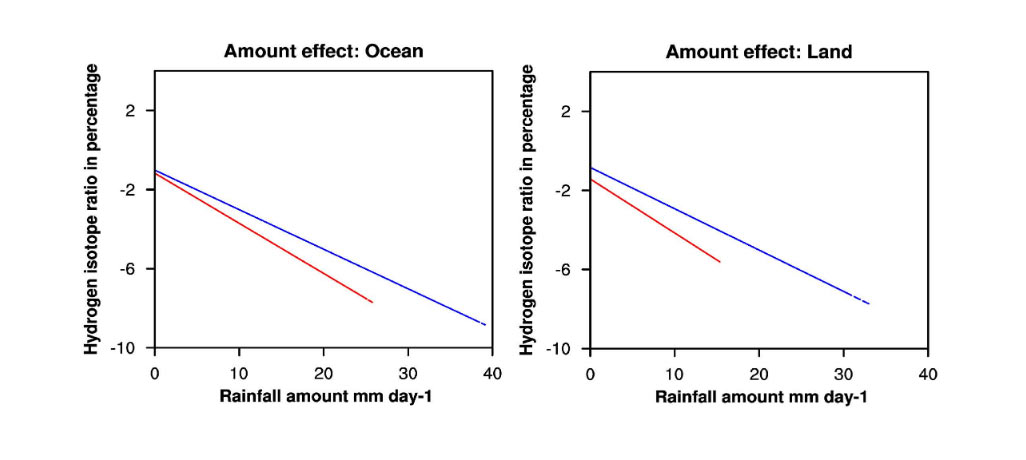

Isotopes are elements with the same atomic numbers but different masses. Water is composed of one oxygen atom and two hydrogen atoms. The oxygen atom has two major stable isotopes in nature. They are 16O (abundance 99.75%), and the heavier 18O (abundance 0.20%). Hydrogen has two isotopes 1H (abundance 99.98%) and deuterium 2D (0.01%). During evaporation lighter molecules evaporate preferentially and hence vapor becomes depleted in the heavier isotope. During condensation the heavier molecules condense preferentially. The heavier isotope ratio in water is reported as a deviation from a standard sample of water with a known isotope ratio. In the tropics, regions with larger rainfall show depletion in the heavier isotope of oxygen or hydrogen. Hence the measurement of the concentration of the heavier isotope of oxygen or hydrogen in rainwater can be used to infer the amount of rainfall. Trees and cave deposits (called stalagmites) preserve the history of past rainfall. Hence we can reconstruct past rainfall based on this evidence.
Recent observations suggest that the extent of depletion of the heavier isotope depends on convective rainfall, and not total rainfall. To understand this issue better, we used a climate model to assess the relation between the deep convective rainfall and the depletion of the heavier isotopes. In the climate model, the total tropical rainfall is the sum of deep convective (85%), shallow convective (3%) and large-scale rainfall (12%). We reduce the contribution of deep convective rainfall in a controlled manner. We find that with the reduction in deep convection, the heavier isotopes of hydrogen, and hence the isotope ratios increase. This amount effect is estimated as the magnitude of the regression slope between long- term monthly precipitation amount and hydrogen isotope ratios in rain over tropics. Thus, our study indicates that the analysis of isotope ratios in rainfall could be a powerful tool to improve convective parameterization schemes in climate models.
Our study also implies that changes in convective activity and relative proportions of rainfall types over a region in the past could introduce uncertainties in the estimated rainfall. More positive values of isotope ratios in proxy records may imply a reduction in deep convection rather than a reduction in total rainfall.
Reference: Tharammal, T., Bala, G. and Noone, D., 2017. Impact of deep convection on the isotopic amount effect in tropical precipitation. Journal of Geophysical Research: Atmospheres, 122(3), pp.1505-1523
